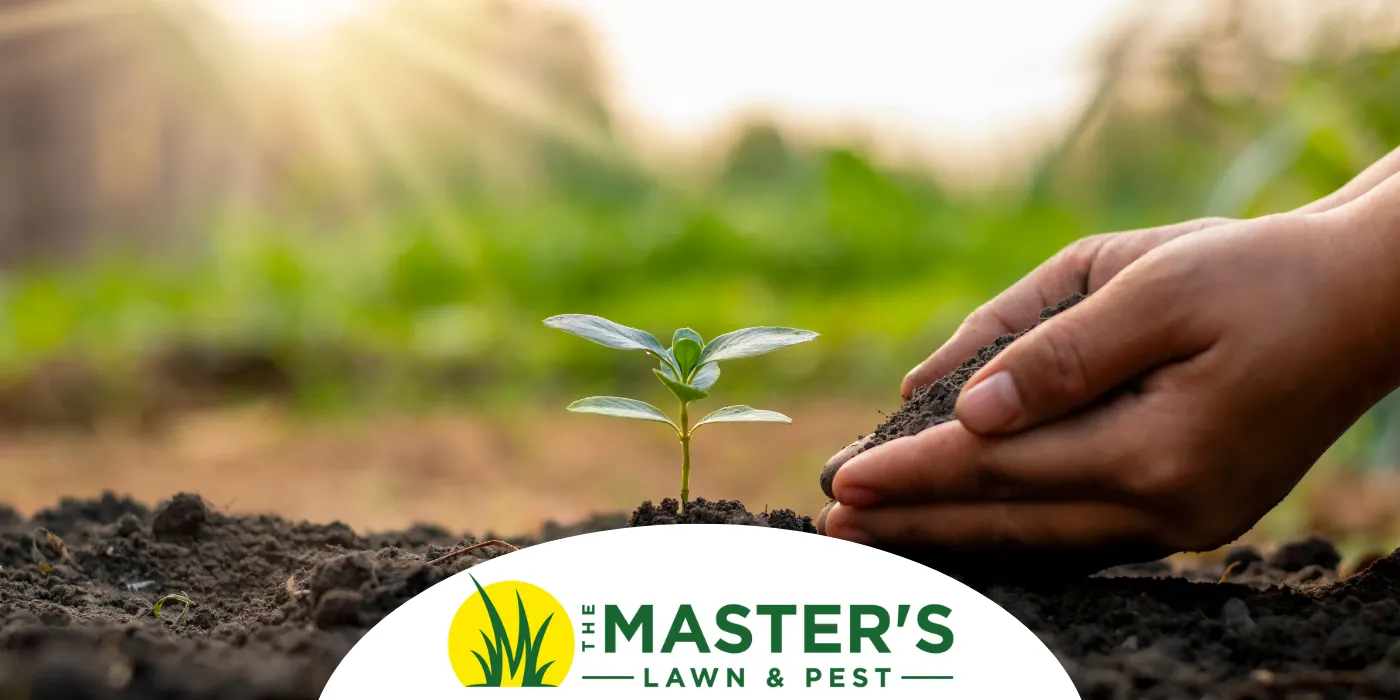Soil health is the foundation of a thriving landscape, yet in North Florida, sandy soils present unique challenges. These soils drain quickly, struggle to retain nutrients, and can become compacted over time, making it difficult for plants to establish strong roots. To overcome these issues, homeowners should focus on three essential soil improvement techniques: aeration, topdressing, and mulching. Each plays a crucial role in enhancing soil structure, increasing moisture retention, and ensuring long-term landscape success.
Understanding North Florida’s Sandy Soils
Sandy soils are naturally well-draining, which can be beneficial in preventing waterlogged roots but problematic for maintaining moisture and essential nutrients. Without proper care, these soils can become compacted, leading to poor root development, increased water runoff, and reduced microbial activity—all of which negatively impact plant health.
Fortunately, soil health can be improved with aeration, topdressing, and mulch, which work together to create a stronger foundation for your lawn, trees, and garden beds.
Aeration and Topdressing: The Dynamic Duo for Soil Health
Aeration and topdressing are two of the most effective ways to improve soil structure, particularly in sandy landscapes. These techniques help enhance the soil’s ability to absorb water, retain nutrients, and promote healthy root growth.
How Aeration and Topdressing Improve Soil:
- Increases Oxygen and Water Penetration
Aeration involves removing small plugs of soil to reduce compaction and improve air and water flow. This allows roots to access oxygen and moisture more efficiently, promoting healthier growth. - Enhances Soil Structure and Nutrient Retention
Topdressing with a thin layer of nutrient-rich compost or organic material replenishes depleted soil, improving its structure and ability to retain essential nutrients. This is particularly important in sandy soils that tend to leach nutrients quickly. - Encourages Microbial Activity and Root Development
Healthy soil is teeming with beneficial microorganisms that help break down organic matter and make nutrients available to plants. Aeration and topdressing promote microbial activity, leading to stronger, more resilient plants.
The Role of Mulch in Soil Health
While aeration and topdressing improve soil from within, mulch provides an external protective layer that enhances soil health in multiple ways.
How Mulch Benefits Your Landscape:
- Moisture Retention
North Florida’s warm climate leads to rapid evaporation, making it difficult for soil to hold onto moisture. Mulch acts as a barrier, slowing down evaporation and helping soil stay hydrated longer, reducing the need for frequent watering. - Erosion Prevention
Sandy soils are highly susceptible to erosion from rain and wind. Mulch helps stabilize soil, reducing runoff and keeping essential nutrients in place. - Nutrient Enrichment
As organic mulch decomposes, it naturally adds essential nutrients back into the soil, improving soil structure and supporting plant growth over time.
Best Practices for Aeration, Topdressing, and Mulching
To maximize the benefits of these soil-improving techniques, follow these best practices:
- Aerate once or twice a year, preferably in the spring or fall, to relieve soil compaction and enhance root growth.
- Apply a thin layer (¼ to ½ inch) of organic topdressing after aeration to improve soil structure and nutrient content.
- Use organic mulch such as pine bark, cypress, or hardwood mulch, applying 2-3 inches around trees and plants while keeping it away from trunks and stems.
At The Masters Lawn & Pest, we help homeowners in Gainesville, St. Augustine, and the surrounding areas improve their soil health through professional aeration, topdressing, and mulching services tailored to North Florida’s unique conditions.


